The plant kingdom conceals many secrets & offers to those who take the time to observe well, many lessons.
Plants are all around us: in our streets, our countryside, our houses, our plates… However, we don’t take the time to really observe them, & to understand how, by looking at them, we can benefit from them!
The theory of signatures is a fascinating theory that comes from our ancestors, & that teaches us how everywhere around us, nature puts at our disposal wonderful tools for care & well-being.
What is the signature theory1 ?
The theory of signatures is a very old theory, which was represented by Paracelsus, a famous physician, philosopher & secular theologian, who formulated this theory in a single sentence.
se, who formulated this theory in a very succinct phrase: “similia similibus curantur” – in other words “like cures like”.
(This same theory can be found in homeopathy!)
This theory is based on the idea that nature is a messenger, if not a divine entity, which translates its will and advice through the plants that surround us.
We would only have to observe to hear & understand this message.
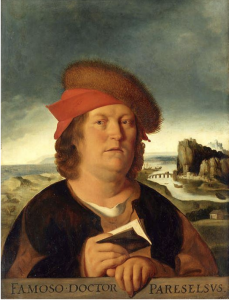
Thus, each plant from its conception, in its form, its color & its attributes, would indicate to Men its use.
Man is prone to ailments, but he can find in nature everything he needs to survive, & especially to heal.
Antioxidant, depurative, anti-poisonous remedies, in short, a real pharmacy available to all.
“Everything that nature gives birth to, she forms according to the essence of the virtue that is inherent to her” – Paracelsus
This was the way the ancients understood nature & practiced herbal medicine. Without scientific knowledge, they relied on their experiments and their senses to know the properties of each plant.
To understand this theory, we need only look at concrete examples: Some examples of the plant-organ relationship:
The most telling example is that of the walnut kernel: indeed, if we look closely, it is similar to the human brain; the ancients therefore associated the walnut with beneficial virtues for our cerebral organ. Nowadays, scientific studies have confirmed this theory: indeed, the walnut would have the capacity to increase our serotonin level, the hormone responsible for our mood, & thus by resonance related to our appetite, our sleep…
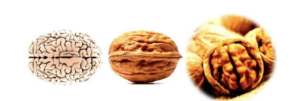
There are many other examples that show us the link between plants & our organs:
Lungwort (pulmonaria officinals): this small plant whose lung-shaped & spotted leaves evoke the shape of lung alveoli, is indeed connected to our respiratory system: indeed, it has the ability to treat respiratory & lung ailments.
– Three-lobed liverwort (Hepatica nobilis)
Suspected to act on liver diseases because of the shape of its leaves similar to the lobes of the
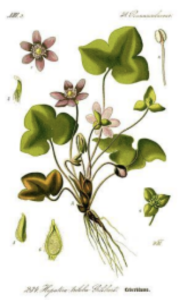 liver, science will confirm this property once again.
liver, science will confirm this property once again.
– The common viperine (Echium vulgare)
Reputed to cure the bites of venomous snakes, its seeds having a resemblance with the head of a viper, this plant has indeed an anti-venomous action.

Some plants are also associated with organs thanks to their color: – The burnet (Sanguisorba officinalis):
It was thought that its red color made it a plant capable of absorbing blood: but it turns out that it has hemostatic capacities
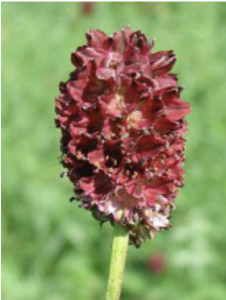
– Cornflower (Centaurea cyanus):
Its blue color attributes properties on eye ailments. Its resemblance can also be associated with the iris.
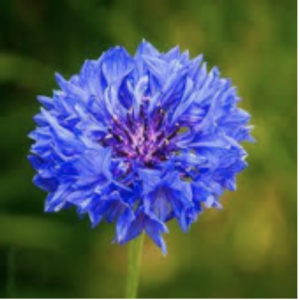
As for the latex plants, they were reputed to favour the production of milk, sperm, & to favour fertility, while fighting against all purulent discharges (plague type for example).
The same is true for resin plants, which are said to promote healing (due to the strength of the resin/trunk). Pubescent plants (with leaves or stems covered in hair) were recommended to treat baldness. Lamiaceae are proposed against quarte fever (a form of malaria), because their stems have a square section.
Finally, many “phallic” plants may have had an aphrodisiac reputation, such as sausage in Africa or asparagus in Europe.
The most convincing example of this theory remains the discovery of Pastor Edward Stone: In the 18th century, Pastor Edward Stone made the following reasoning: the white willow, which grows in flooded meadows and swamps, should cure fevers and rheumatism caused by humidity.
He extracted from the bark of the willow (already known since antiquity) a white powder, from which salicylic acid, the precursor of aspirin, was later isolated.
The signature theory: still credible today?
The signature theory is an integral part of the phyto-therapeutic approach in naturopathy: it is based on the same form of reasoning as holism – taking things globally & not individually, observing, in order to offer the broadest & most global support possible.
The knowledge of plants has been acquired through thousands of years of food and sensory experiences (smell, taste, body experience after ingestion…). From this
would come for example the idea of a medicine all the more effective as it is unpleasant, like bitter and astringent plants.
This knowledge was necessary to build our scientific knowledge base on the subject, & allowed human beings to take a close interest in phytotherapy.
The signature would thus be a mnemonic means within a medieval encyclopedic knowledge made of ill-ordered accumulations, favoring the conservation and transmission of knowledge in these societies. It would thus have been, for centuries, a means of “recognizing the active plant and therefore of obtaining it, while limiting the risks of error as much as possible “2 , particularly in relation to toxic plants.
But beyond this empirical approach, the signature also echoes a deeper, more spiritual link. For Paracelsus, it is the emanation of the divine that founds this theory: the world is not only a “signature” of God; man also carries within him a signature that allows him to access the revelation of all the others, notably that of plants. Where logicians see a principle of analogy, Paracelsians see a principle of identity in a never-ending mirror game. This is the origin of simili similibus curantur or healing by similarities.
This principle of occult identity was criticized, among others, by Francis Bacon and Voltaire, and finally rejected by the academic world towards the end of the 17th century.
However, there are nice similarities between Man and plants, but also between Man and… the cosmos!
Indeed, according to some scientists, the structure of the universe would be similar to that of the human brain3 : the cosmic web & the web of neurons are similar! Or this image, made with a logarithmic scale by Pablo Carlos Budassi4 which looks strangely like … a human iris!

Today, although useless in the eyes of science, this theory remains an important precursor of our scientific and phyto-therapeutic knowledge, as well as a beautiful invitation to observe the world around us: stop, observe nature, the cosmos, connect to it, & feel as if we were part of a whole, this is what the signature theory invites us to do.
Author: Chiara PORTE HAQUIN, student at AMCC

1 https://fr.wikipedia.org/wiki/Th%C3%A9orie_des_signatures
2 Wikipédia – La théorie des Signatures
3 Article publié dans la revue « Frontier in Physics »
4Sciences et Avenir n° 869-870 daté juillet-août 2019.




Leave a Reply